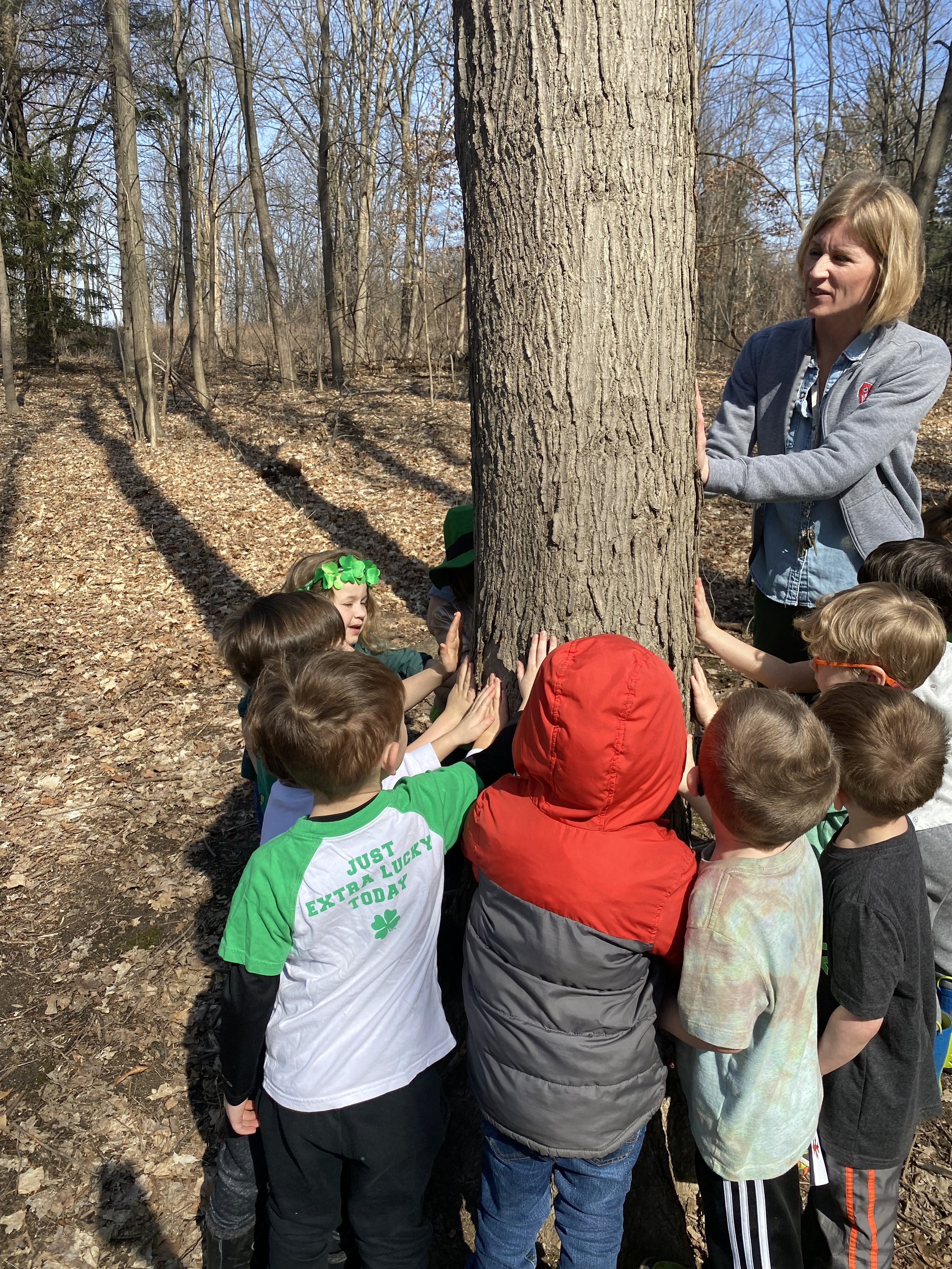March 2022: Nature Center
Smell that? It’s the smell of Maple Sugar month!
This month, DK students experienced what makes March the sweetest month of the year. Students learned that there is a lot of work that must happen before you can smother your pancakes with sweet sticky syrup. Especially when you are a group of Nature Detectives! Before embarking on our tapping journey we had to solve this month’s big mystery: What can we learn from trees?
Let’s Talk Trees…
Our group of Nature Detectives shared what they already knew through our Learning Tree. Students each had their own Maple leaf that they added to the tree after answering different questions, such as: How does bark help a tree? Which animals live in a tree? Can you name a kind of food people eat from trees? What is the purpose of the roots of a tree?
After adding a leaf for each answered question, we were left with a visual that showed us how much we already knew about trees!
Tree Identification
While there are various trees that provide edible sap, our focus is on tapping Sugar Maple trees. In order to do this, we have to know what we are looking for! Using informative field guides, students studied the bark, leaves, and buds on many trees to figure out which kind of trees they saw on their hike. This required paying close attention to detail in order to compare and contrast the different characteristics they were investigating.













During this process, clues were revealed about our big mystery (what can we learn from trees) . Through studying the trees closely for identification, students discovered that they can learn about how old a tree is, the many living things that use a tree as a home, how trees can help animals camouflage, and how weather can be strong enough to tear apart even the strongest trees!
Using Knowledge for Action















It was time to do something with what we learned! Working together, each class successfully identified multiple Sugar Maple trees and decided on which one they wanted to tap. In order to make sure a tree is safe to tap, we must measure it first. Using a caliper, the group measured their tree to make sure it was at least 10 inches in diameter. Once that was established, the tapping could begin! Each student took their turn using the handheld drill to drill a hole deep enough into the tree to insert a spile. The final step is hanging a bucket to make sure this sweet sap isn’t just falling to the ground!
The best place to warm up during sugaring season is in our very own Sugar Shack. Inside, the group was able to witness an incredible demonstration of how Mr. Brian uses the evaporator to turn the sap we collect from our trees into tasty maple syrup.







